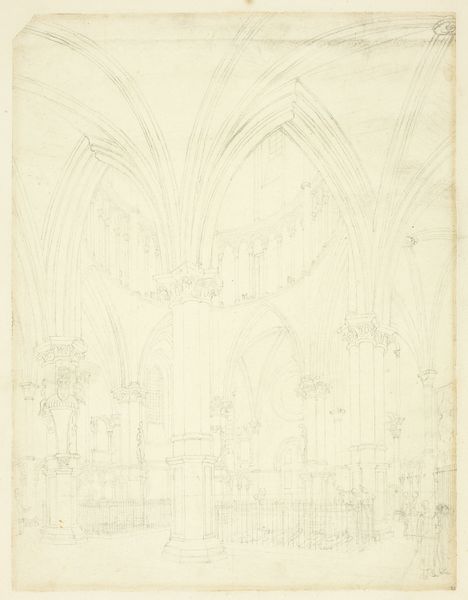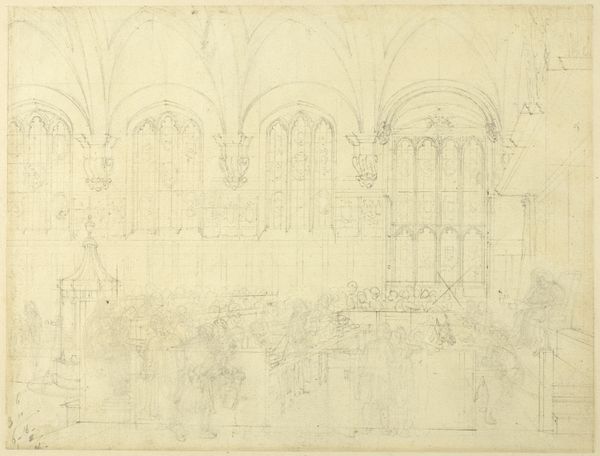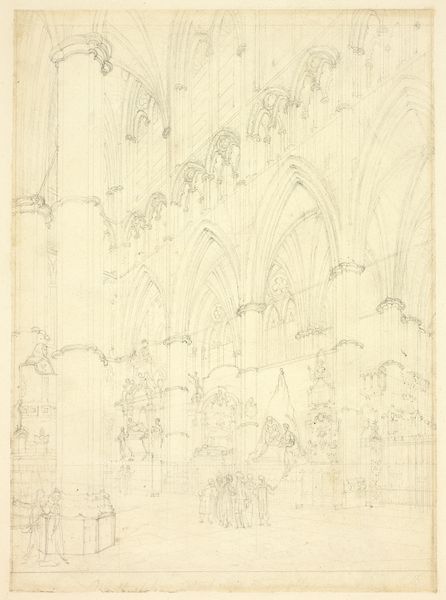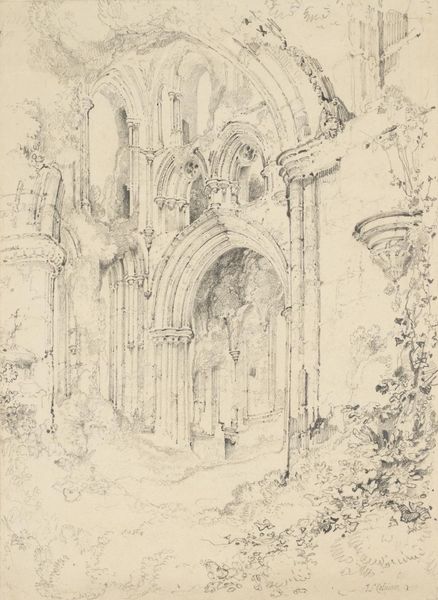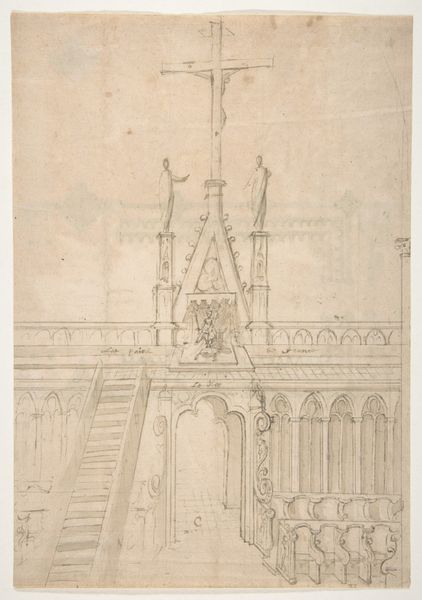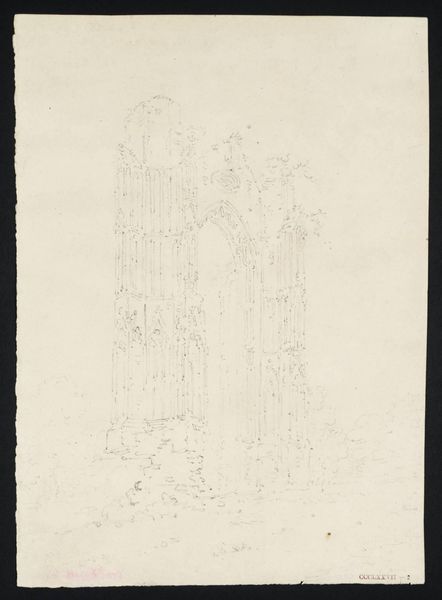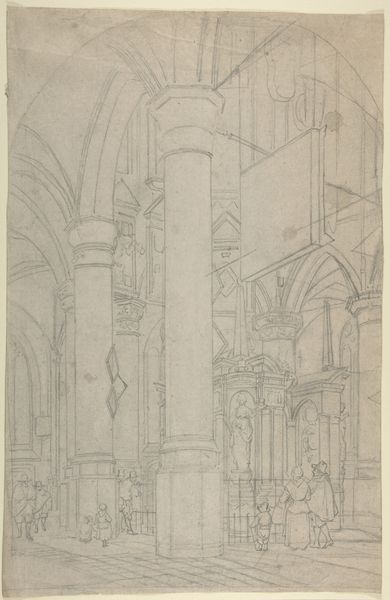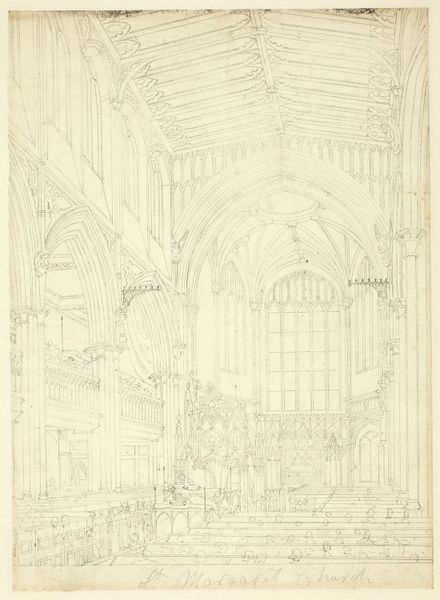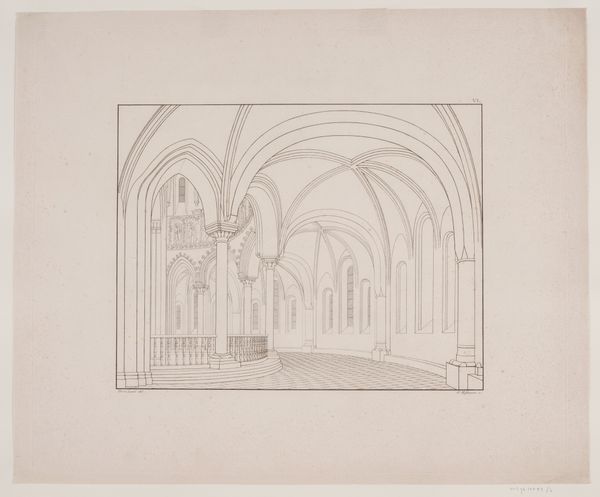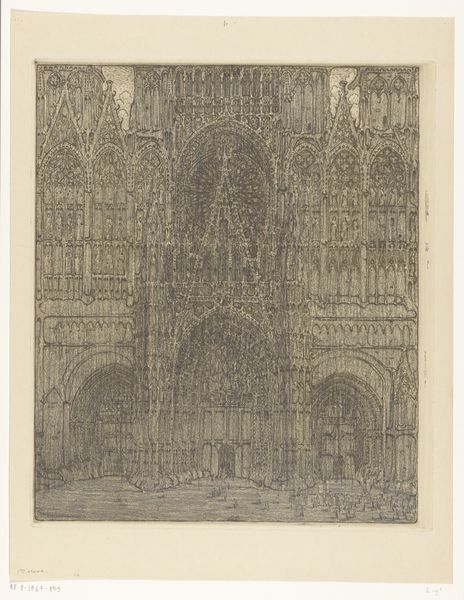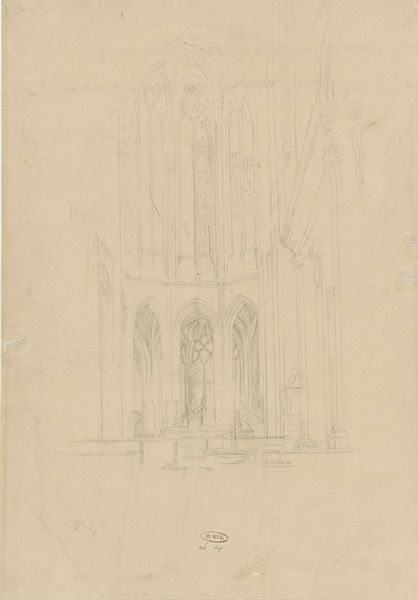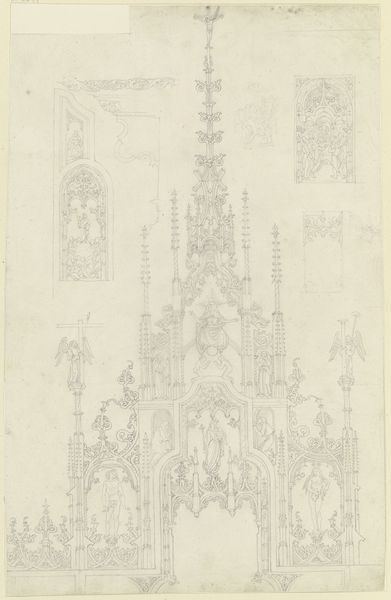
drawing, print, ink, architecture
#
drawing
# print
#
perspective
#
ink
#
history-painting
#
architecture
Dimensions: Sheet: 6 x 4 9/16 in. (15.3 x 11.6 cm)
Copyright: Public Domain
Editor: Here we have Pietro Bosio's "Perspective of a Church's Interior," likely created sometime between 1750 and 1789. It's a drawing or print rendered in ink, depicting what seems to be a very elaborate cathedral. I am immediately struck by the strong use of perspective, it feels theatrical almost. What’s your interpretation of the historical context and any socio-political implications this type of piece might carry? Curator: The intense perspectival view wasn't just about showing off artistic skill; it reflected a specific power structure within the Church and the state. Bosio presents not just architecture, but hierarchy. Consider the function of sacred spaces during this era. Cathedrals weren’t merely places of worship but also venues for state ceremonies, political negotiations, and displays of power. Who occupied the central space? Whose stories were elevated? This drawing captures a staged social theater. Editor: That's interesting. I hadn’t considered the church as a political stage, but that makes a lot of sense, especially looking at how the people at the front appear smaller and less important. How does this piece then reinforce the dominant narratives of the time? Curator: It's reinforcing established power dynamics. The clean lines and ordered perspective emphasize control, suggesting that earthly authority, intertwined with religious doctrine, imposed order on society. Where is the common person in this image? Their scale is deliberately diminished, which served to validate social structures during a period when those structures were increasingly questioned. Thinkers of the Enlightenment were challenging divine right and advocating for individual rights. What counter-narratives might we be overlooking within such imagery? Editor: That makes me wonder about the artist's intention. Was Bosio deliberately making a political statement, or was he simply reflecting the world around him? Curator: The line between reflection and endorsement blurs during this period, and I think Bosio is a reflection of the entanglement between sacred space and authority, while also participating in the reproduction of those conditions. Ultimately, recognizing this visual rhetoric allows us to ask questions about the power dynamics still present in our contemporary environments. Editor: Thanks, I'll definitely keep those power dynamics in mind the next time I look at architectural art!
Comments
No comments
Be the first to comment and join the conversation on the ultimate creative platform.
